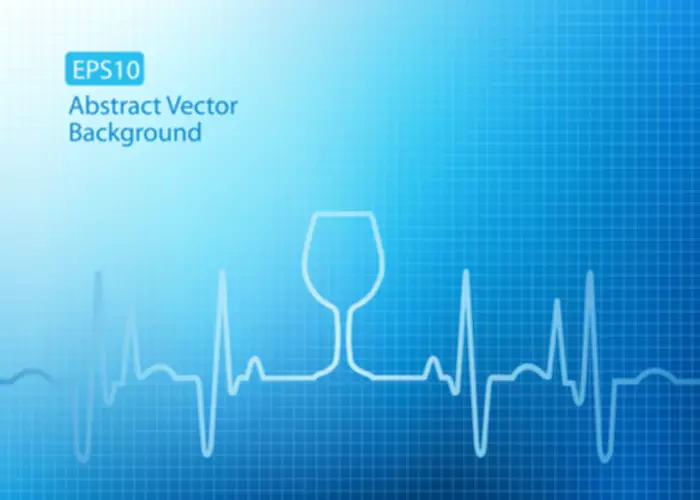
New technological developments that allow for faster and more complete genotyping and sequencing will accelerate progress, as will technical developments allowing targeted overproduction or inactivation of genes in animal models. Alcohol is widely consumed; however, excessive use creates serious physical, psychological and social problems and contributes to the pathogenesis of many diseases. Alcohol use disorders (that is, alcohol dependence and alcohol abuse) are maladaptive patterns of excessive drinking that lead to serious problems. Abundant evidence indicates that alcohol dependence (alcoholism) is a complex genetic disease, with variations in a large number of genes affecting a person’s risk of alcoholism.
Alcohol metabolism and the risk for AUD
This method allowed for detailed insights into cellular disruptions across varying AD stages and AUD cases. The study examined RNA sequencing data from hundreds of thousands of brain cells, including 75 patients across early, intermediate, and advanced stages of Alzheimer’s, compared with data from patients with AUD. Findings revealed that both disorders exhibit overlapping gene expression alterations, particularly in genes related to inflammation, cellular signalling, apoptosis, and blood vessel function. The analysis indicated a significant loss of inhibitory and excitatory neurons, with distinct dysregulation in cell types like endothelial cells and vascular leptomeningeal cells, particularly evident in advanced AD stages.
STRATEGIES FOR IDENTIFYING GENETIC ASSOCIATIONS WITH ALCOHOLISM

One way around this has been the use of intermediate phenotypes, including electrophysiological and imaging, that reflect mediating factors in behavior and are likely to be influenced by variation at fewer genes. In recent years there have been attempts at empirical classification of alcoholics into clinically relevant and potentially genetically distinct subgroups based on the large National Epidemiologic Survey on Alcohol and Related Conditions (NESARC) 2 that will be discussed later. Finally, the diagnostic criteria for the alcoholism phenotype (now called alcohol use disorder (AUD)) have just been radically revised in the Diagnostic and Statistical Manual of Mental Disorders, Fifth Edition (DSM-5) 3. The aim of this review is to highlight some recent studies in human research that are of particular interest and not to provide exhaustive coverage of the literature. Like many other complex traits, alcoholism appears to be clinically and etiologicaly hetrogenous13.
Can a Person Be Born with an Alcohol Use Disorder?
The broader health and social effects of this new type of information may not be seen quickly, but they could be quite profound over time. People who meet criteria for dependence often have multiple cases of alcoholism in their families. The methods used in these genetic analyses and other aspects of the COGA study are described in more detail is alcoholism a genetic disease in the article by Bierut and colleagues, pp. 208–213, in this issue. Genetic variation in neurobiological pathways, including stress-response systems, may influence vulnerability to the development of permanent neurological changes in response to heavy alcohol use. Likewise, genetic variation may determine increased vulnerability to relapse in response to stressors. This is of particular concern when you’re taking certain medications that also depress the brain’s function.
Finding the genes involved in our responses to alcohol and understanding their effects may thus illuminate a broader array of conditions, too. Revealing the biological processes that can build and reinforce alcohol addiction will most certainly help to better target existing treatments and devise new ones to break alcohol’s hold. The researchers analyzed genetic data from the 3 million 23andMe research participants, focusing on three specific little snippets of DNA known as single-nucleotide polymorphisms, or SNPs.
Genetic Influences on the Development of Alcoholism
The GI tract is exposed to very high levels of alcohol as it passes throughthe mouth, esophagus, stomach and intestinal tract, and most ethanol passes throughthe liver before entering the circulation. Alcohol levels in common drinks rangefrom approximately 5% (1.1 M) for beer, 11-15% for wine (∼3M) and 40% for spirits (∼9 M). The oral cavity and esophagus aredirectly exposed to those levels, and the liver is exposed to high levels from theportal circulation.
DNA Regions Associated with Co-Occurring Disorders
Undoubtedly, there is value in limiting the use of alcohol, nicotine and other mood-altering drugs in general. There is also value, however, in supporting individual self-knowledge as it pertains to susceptibility so that people can make informed choices for themselves and in shaping a culture that regards this as a positive goal. Variants of each of the known genes only modestly alter an individual’s vulnerability to alcohol, but many are common in the general population and may have wider effects on drinking habits, on other addictions or problematic behaviors, and on disorders such as depression and anxiety.

We have since conducted several studies that have disentangled family history into elements of genetic liability, nurture and density of risk (e.g., References 23, 24, 25). We were also able to examine the risk posed by early initiation of alcohol use on later drinking milestones using several analytic paradigms (e.g., References 29, 30). More recently, our longitudinal design has facilitated characterizations of remission and recovery in AUD (e.g., References 31, 32, 33). A detailed description of these findings is outlined in the accompanying review (2. Sample and Clinical Data). Many genes contribute to this risk, with most of those genes making only very small contributions to the overall risk. Genes that affect AUD risk are involved in various biological processes and mental states and traits, including physiological responses to alcohol and stress, alcohol metabolism, addiction-related neurobiology, and behavioral tendencies such as impulsivity.


Sanchez-Roige explained that variants, or alleles, of these particular SNPs are “protective” against a variety of alcohol behaviors, from excessive alcohol drinking to alcohol use disorder. These findings reinforce the notion that there are different paths to alcohol dependence and different physiological pathways underlying them. The ADH risk variants may contribute to the development of alcoholism directly by promoting heavy drinking, whereas the GABRA2 variants predispose a person to conduct problems, which are themselves a risk factor for alcoholism. The genetic contributions to dependence identified so far affect many different aspects of human physiology, from alcohol metabolism to brain activity and taste perception just in the examples we have described. The effect of each of these genes by itself is modest, probably increasing average risk by 20 to 40 percent, and other as yet unidentified genes undoubtedly also contribute to vulnerability to alcohol problems. Majority of genomic data for large alcohol consumption and AUD meta-analysis was either from UKBiobank or from Million Veterans Project.
- Alcohol metabolism begins with absorption in the stomach and small intestine, followed by enzymatic processing in the liver through oxidative and non-oxidative pathways.
- Take our free, 5-minute alcohol abuse self-assessment below if you think you or someone you love might be struggling with substance abuse.
- However, the analyses found no evidence that DRD2 affected the risk for alcoholism (Edenberg et al. 1998a) or that HTT was linked to either alcoholism in general or to a more severe form of alcoholism (Edenberg et al. 1998b).
- Conversely, the strongest evidence in the replication sample for a region containing genes affecting the risk for alcoholism was on chromosome 3, which had shown no evidence of being linked with alcoholism in the initial sample.
GENETICS DATA

1 This means that the samples of case and control subjects may not be sufficiently matched with respect to such factors as ethnicity or other population characteristics, which influence the prevalence of many gene variants or other factors that also may influence alcoholism risk. The team was able to identify twenty-nine genes linked to increased risk of problematic alcohol use—nineteen of them novel—in the human genome, extending the known genetic architecture of the disorder and giving other scientists a wider breadth of targets for follow-up studies. Researchers found that six to eleven percent of the phenotypic variation—referring to differences in what physical and behavioral traits are expressed—could be explained by genetic information. While the D2 dopamine receptor gene did not have the effect expected on alcoholism, the study contributed to moving forward genetic research.








